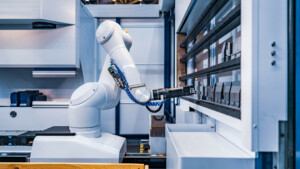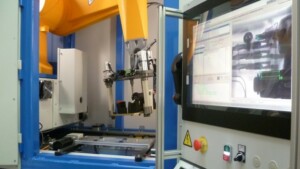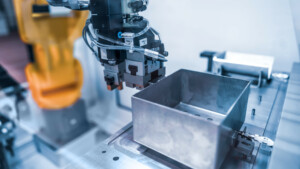Multiple controls
The more complex the parts and assemblies manufactured, or the more sophisticated their applications, the greater the number of inspection points required for these parts. As a result, a single measurement technology or method is often unable to provide a comprehensive inspection of the quality of these parts. The solutions proposed to manufacturers must therefore offer a range of different checks, preferably automated and simple, in order to respond effectively to these growing quality requirements.

What approaches to multiple controls?
In order to perform multiple dimensional measurements, assembly inspections, or other material health checks on the same part, several approaches can be implemented.
One type of measurement but different positions
The first is to use a PLC or robot to position the part in different ways relative to a single sensor. This approach enables multiple measurements to be taken using a single sensor technology but varying the position of the part to cover different control points.
For example, by rotating the part around several axes, the robot can lead the sensor to inspect different surfaces of the part, enabling a complete analysis of its geometry and dimensions.

Combined different measurements
Another approach involves the use of technologies such as machine vision or X-rays, which enable multiple inspection points to be performed on a single image.
These technologies offer the possibility of simultaneously analyzing several characteristics of the part (dimensional accuracy, correct assembly, material health, etc.), providing detailed information on its quality and conformity to specifications.

Multiple measurements for multiple checks
It is also possible to combine several sensor technologies to perform a series of checks. This may involve moving the part to be inspected from one station or sensor to another, using automated handling systems.
For example, a part may initially be inspected by a machine vision system to detect surface defects, then moved to another station where more precise dimensional measurements are carried out using tactile or pneumatic sensors.
The results of these various checks can then be centralized and analyzed to assess the overall quality of the part.

ASSOCIATED SETSMART TECHNOLOGIES
Visit the technology pages for more information on the control techniques used
